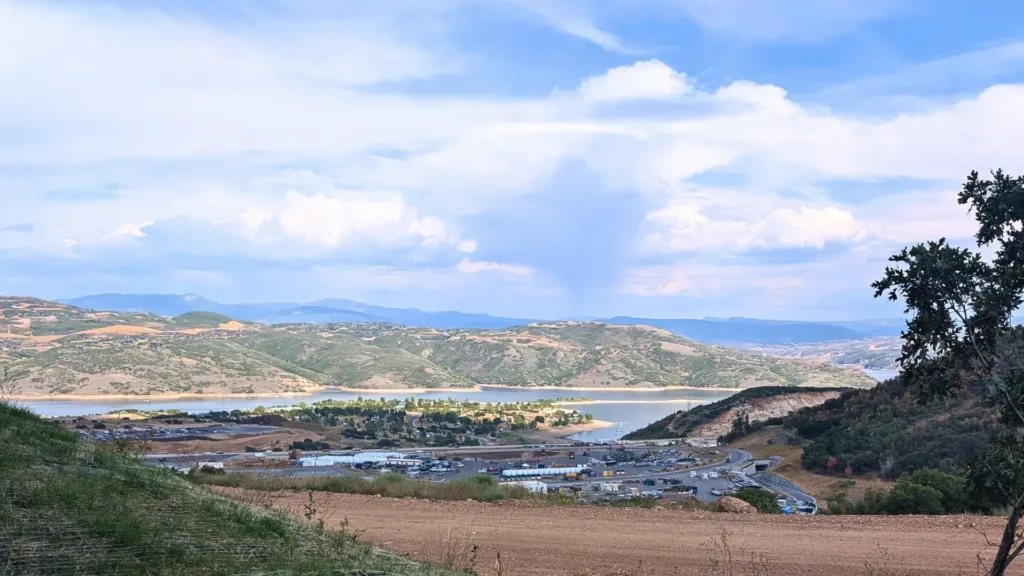
If you’ve driven past the Jordanelle lately, you’ve seen it: cranes, concrete, and a new horizon line forming above the reservoir. Deer Valley Resort’s $400 million expansion isn’t a facelift—it’s a full-scale transformation that’s about to redraw the boundaries of Utah’s most exclusive ski market.
The project adds roughly 3,700 acres of new terrain stretching toward U.S. 40, anchored by the long-awaited East Village base. Think high-speed lifts, slope-side lodging, après plazas, and a parking solution that might finally make powder-day mornings a little less gladiatorial. For real estate, that translates into a brand-new lifestyle district where owners can ski directly home, dine mountainside, and never feel “off-resort.”
The New Axis of Luxury
For two decades, Silver Lake Village and Empire Pass defined upper-end Deer Valley living. Now East Village is shifting that gravity east. Early plans show hotels by international luxury brands, residential phases with private clubs, and ski trails linking directly to the Jordanelle Gondola network. Suddenly, “lake-view ski homes” aren’t a fantasy—they’re a new frontier.
Investors who remember the first wave at Empire Pass know what early entry means: limited inventory, lift adjacency, and strong appreciation once the lifts start turning. East Village sits at that same inflection point right now.
Why This Expansion Matters to Home Values
Major resort expansions don’t just add ski terrain—they expand buyer psychology. More runs and more access create a sense of scale and permanence that drives sustained demand for nearby property. Early-release homes near lift corridors traditionally command higher resale interest once the resort opens.
For East Village and the surrounding Jordanelle corridor, that likely means a ripple effect on pricing and perception. The area’s combination of new infrastructure and proximity to Salt Lake City’s airport makes it one of the most logistically appealing resort investments in the West.
Browse the latest East Village homes for sale to see how this phase of Deer Valley’s growth is already taking shape.
Smart Moves for Buyers and Investors
- Understand Phasing. Not every parcel hits the market at once; early-phase buyers trade construction dust for equity upside.
- Confirm Access. “Ski-in” will mean everything from true click-in proximity to a short gondola hop—always verify.
- Know Your HOA. Branded residences often include rental management clauses; great for turnkey investors, less ideal for full-time use.
- Partner Local. On-the-ground agents see shifts before they hit the MLS—that’s where we come in.
What It Means for Locals
Yes, there’s construction noise and detours, but also new trailheads, improved parking, and workforce housing—amenities that benefit year-round residents. The challenge will be balancing growth with livability. Based on how Deer Valley handled previous expansions, expect thoughtful design, not urban sprawl.
The Takeaway
Deer Valley’s $400 million expansion isn’t marketing spin—it’s a redefinition of luxury mountain living. For anyone who missed the first Empire Pass boom, this is the next chapter. Early movers will capture access, appreciation potential, and bragging rights that only happen once a generation.
Ready to see what’s rising first? Connect with the Keye Team for current release timelines and insider updates direct from the builders shaping Deer Valley’s future.
FAQs
Q: Is Deer Valley’s East Village already open?
A: Yes — the East Village area is now open in a limited capacity. Visitors can access it with a rental shop, complimentary ski storage, and shuttle service from the new parking lot.
Q: What parts of the expansion remain to be built?
A: Most of the full amenities, lodging, and lift infrastructure are still being phased in. In the 2025–26 season, the resort plans to launch 7 additional lifts and 80 new trails.
Author: Nikki Keye — Park City Realtor & local real-estate expert with 24 years of experience in the Wasatch Back.

Leave a Reply